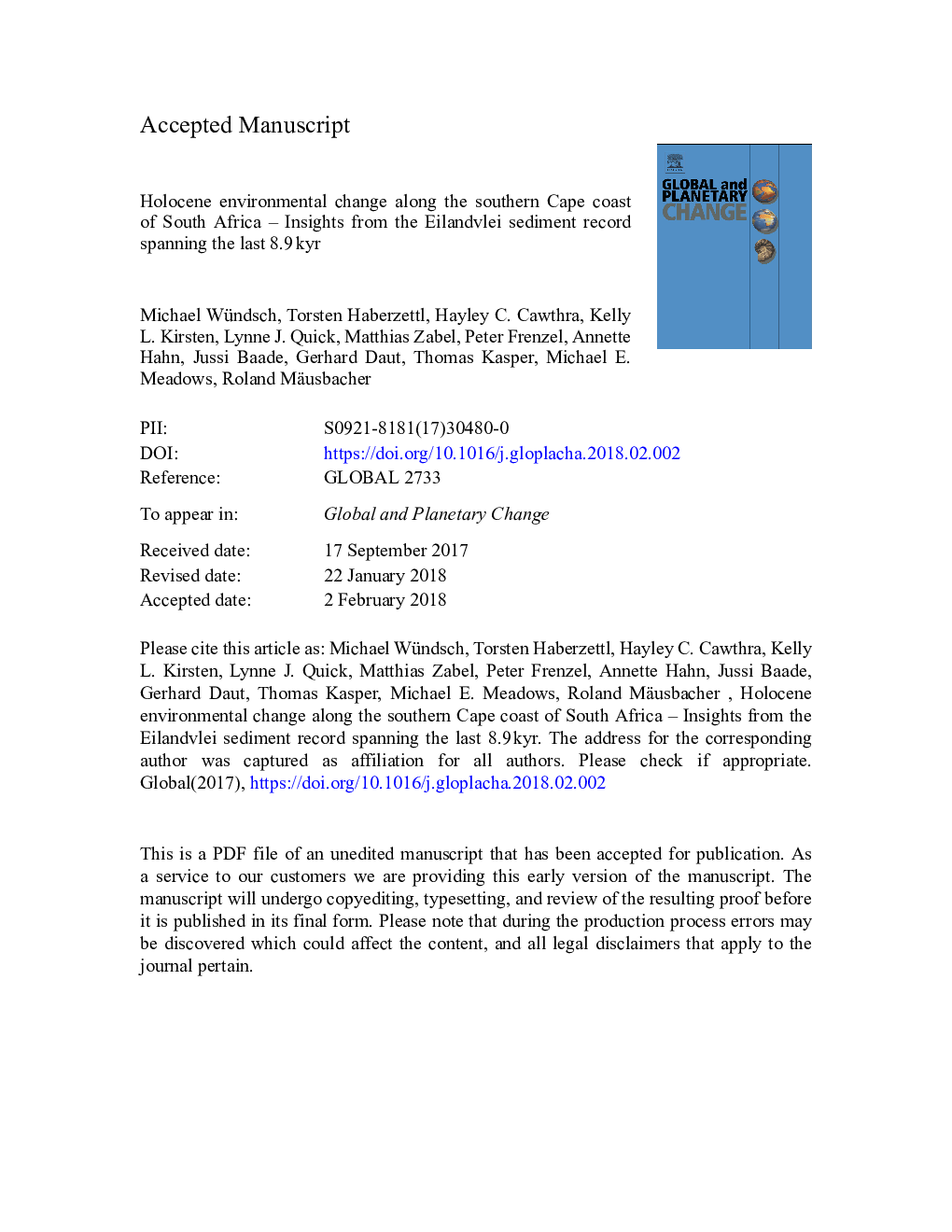| Article ID | Journal | Published Year | Pages | File Type |
|---|---|---|---|---|
| 8867534 | Global and Planetary Change | 2018 | 43 Pages |
Abstract
Grain size and geochemical data (Fe, Si/Al, chemical index of alteration (CIA)) further reflect changes in the deposition of terrigenous sediments at the core site. While the sedimentation of fine-grained (<16â¯Î¼m), iron-rich and highly weathered material is linked to periods of increased river discharge and rainfall, high amounts of deposited quartz (31-250â¯Î¼m, high Si/Al) point to relatively dry and/or windy conditions during which increased aeolian transport of dune sands occurred. The proxies indicate reduced river discharge and hence possibly drier climatic conditions than today from ~8900 to 7900â¯cal BP and ~6400 to 3000â¯cal BP. In contrast, the periods between ~7900-6400â¯cal BP and ~3000â¯cal BP-present were likely characterized by high river discharge and thus, generally more rainfall. The reconstructed palaeoclimatic variations are discussed within the context of e.g., shifts in the position of the Antarctic sea ice extent and the mid-latitude westerly wind belt as well as changes in the El Niño-Southern Oscillation (ENSO).
Keywords
Related Topics
Physical Sciences and Engineering
Earth and Planetary Sciences
Earth-Surface Processes
Authors
Michael Wündsch, Torsten Haberzettl, Hayley C. Cawthra, Kelly L. Kirsten, Lynne J. Quick, Matthias Zabel, Peter Frenzel, Annette Hahn, Jussi Baade, Gerhard Daut, Thomas Kasper, Michael E. Meadows, Roland Mäusbacher,
